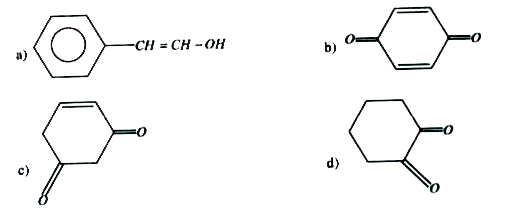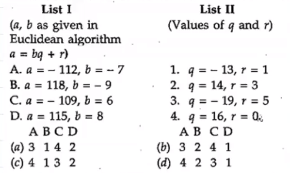Solution in Telugu
The correct Answer is:A-S; B-R; C-Q; D-P
Topper's Solved these Questions
- BOOK - AAKASH SERIESCHAPTER - IONIC EQUILIBRIUM EXERCISE - PRACTICE SHEET (EXERCISE -IV LEVEL -I (ADVANCED) (Integer Type Questions))10videos
IONIC EQUILIBRIUM
- BOOK - AAKASH SERIESCHAPTER - IONIC EQUILIBRIUM EXERCISE - ADDITIONAL PRACTICE EXERCISE (LEVEL -I (MAIN) (Straight Objective Type Questions))22videos
IONIC EQUILIBRIUM
- BOOK - AAKASH SERIESCHAPTER - IONIC EQUILIBRIUM EXERCISE - PRACTICE SHEET (EXERCISE -IV LEVEL -I (ADVANCED) (Linked Comprehension Type Questions))6videos
IONIC EQUILIBRIUM
- BOOK - AAKASH SERIESCHAPTER - HYDROGEN AND ITS COMPOUNDSEXERCISE - QUESTIONS FOR DESCRIPTIVE ANSWERS20videos
HYDROGEN AND ITS COMPOUNDS
- BOOK - AAKASH SERIESCHAPTER - ISOMERISM EXERCISE - ADDITIONAL PRACTICE EXERCISE ( PRACTICE SHEET (ADVANCED) INTEGER TYPE QUESTIONS)10videos
ISOMERISM
Similar Questions
At what pH will a 10 −4 M solution of an indicator with K b =1×10 −11 change colour?
06:46View SolutionA solution contains equimolar concentration of a weak acid HA and its conjugate base A−,pKb of A− is 9 . The pH of the solution is
02:47View SolutionAn acidic indicator ionises as InH⇔In−+H+ . The molecular and ions of the indicator show different colours. The indicator changed it colour if its acidic of basic form completely predominant.
Dissociation constant of an acidic indicator is 10−5 . At what pH 80% of the indicator exists in molecular form ?02:03View SolutionWhy the use of hard water is disadvantages?
02:39View SolutionTautomerism is exhibited by X number of compounds among the following. What is X.
 View Solution
View SolutionMatch List I with list II and select the correct answer:
 View Solution
View SolutionList-I contains angles in radians and List-II contains the quadrant in which the angle lies.
∣∣ ∣ ∣ ∣ ∣ ∣∣List-IList-II(P)2c(1)I(Q)4c(2)II(R)6c(3)III(S)7c(4)IV∣∣ ∣ ∣ ∣ ∣ ∣∣02:37View SolutionThe following are the steps in finding the matrix B, if B+(2345)=(5432). Arrange them in sequential order.
(A) ∴(pqrs)+(2345)=(5432)
(B) Let B=(pqrs)
(C) (p+2q+3r+4s+5)=(5432)
(D) P+2=5,q+3=4,r+4=3,s+5=2
⇒p=3,q=1,r=−1,s=−3
(E) ∴B=(31−1−3)01:31View SolutionMatch List-I with List-II and chose the correct answer from the code {:("List-I Electrolyte","List-I Solubility product"),(a.Bi_(2)S_(3),i.4s^(3)),(b.CdS,ii. 27s^(2)),(c.AI(OH)_(3),iii.108s^(5)),(d.CaF_(2),iv.s^(2)):}
03:01View SolutionMatch the stoichiometric coefficients listed in Column II with the species listed in Column I that are involved in the balanced equation of the reaction : {:(,"LIST -I",,"LIST -II"),((P),FeC_(2)O_(4),(1),10),((Q),MnO_(4)^(-),(2),24),((R),H^(+),(3),5),((S),CO_(2),(4),3):}
00:49View SolutionMatch the following : {:(,"LIST -I",,"LIST -II"),((P),K_(4)[Fe(CN)_(6)] to Fe^(3+) + CO_(2)+NO_(3)^(-),(1),61),((Q),FeS_(2) to Fe^(3+) +SO_(2),(2),11),((R),Br_(2)+2NaOH to NaOBr+NaBr+H_(2)O,(3),28),((S),As_(2)S_(3) to As^(+5)+SO_(4)^(2-),(4),5//3):}
07:00View SolutionList-I List-II In the aqueous medium the ion can be(A)HPO−24P.Arrhenius acid(B)CO−23Q.Bronstead base(C)H2PO−13R.Amphoteric(D)H2PO−12S.Bronstead acid
04:15View SolutionList-I List-II(A)SiF4P.Lewis acid(B)CO2Q.Lewis base(C)SO2R.Bronstead acid(D)NH3S.Bronstead base
04:14View SolutionList -I SaltList -II Kg(A)AgCIP.27S4(B)PbI2Q.108(S)5(C)AS2S3R.4S3(D)Ag3PO4S.S2
03:50View Solution{:(" List-I "," List-II "),("1) Argentite ","a) KCl"),("2) Horn silver ","b) AgCl"),("3) Ruby silver ","c) "Ag_(2)S),("4) Sylvine ","d) "2Ag_(2)S.Sb_(2)S_(3)):}
04:43View SolutionMatch the complexed listed column −I with type of hybridisation listed in column −II and select the correct answer using the code given below the lists :
Column−IColumn−II(a)[AuF4]−(p) dsp2hybridisation(b)[Cu(CN)4]3−(q) sp3hybridisation(c)[Co(NH3)6]3+(r) sp3d2hybridisation(d)[Fe(H2O)5NO]2+(s) d2sp3hybridisation01:58View Solution

